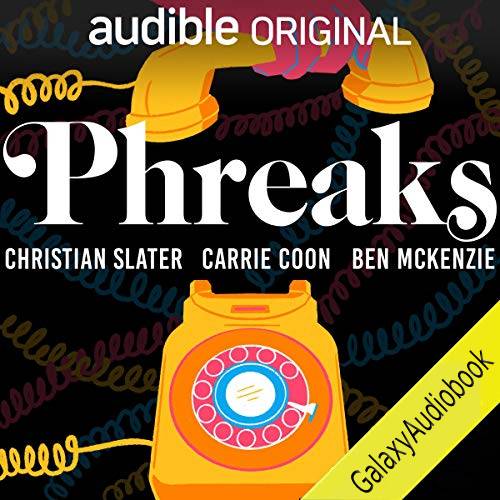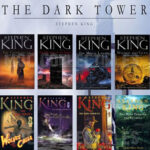Click to rate this post!
[Total: 0 Average: 0]
Phreaks audiobook
Hi, are you looking for Phreaks audiobook? If yes, you are in the right place! ✅ scroll down to Audio player section bellow, you will find the audio of this book. Right below are top 5 reviews and comments from audiences for this book. Hope you love it!!!.

Review #1
Phreaks audiobook free
Allow me to introduce Phil Lapsey\’s non-fictional 2013 narrative Exploding the Phone: The Untold Story of the Teenagers and Outlaws Who Hacked Ma Bell with some personal observations relevant to his research: Back in the 1970s, in the San Fernando Valley just north of Los Angeles, you could call a free-of-charge telephone number that read you the current time. What the majority of the users of this service would never realize was that in some circumstances, due to a fluke of the telephone system, you could often hear faint voices in the background, not a part of the computerized recording reciting the time as it progressed. If you listened closely, some of the voices were intelligible, clearly raising their voices to get through to others on the line. They\’d call out a telephone number, then follow up with variations on \”Call the trunk line!\” or \”Call the busy signal!\”or \”Call the loop line!\” That\’s how I was introduced to one tiny pocket of the much larger phenomenon that came to be called Phone Phreaking, and spent untold hours \”hacking\” the same still antiquated telephone system as more sophisticated – and often genius – kids with innate engineering talent and an inexhaustible curiosity about things mechanical or electric in their everyday worlds. Like these other kids – I was in my late teens or early twenties when I started – I explored the bizarre nature of Ma Bell\’s ancient switching system solely by searching out these weird test lines, loop lines, and on-again off-again busy signals because, like them, I was intensely curious yet even more intensely drawn into myself, a lifelong loner others kids always saw as different, as socially awkward as anyone you\’d ever meet. Wandering the maze of numbers that allowed people like myself to connect anonymously with others like me was, it felt, perfectly natural, and great fun besides! I discovered by \”random\” dialing similar numbers that I could find dozens of others that acted like the time line did, and relatively fewer numbers that would allow a one on one private conversation, and fewer yet that were true party lines where dozens of kids could be heard clearly having conversations in and around other voices, calling out the numbers to other busy signals, loops, or party lines, or just providing their own surreal monologue to the mix. My favorite to this day was a guy who repeated, in measured tones that allowed him to stand out above the crowd, the phrases \”I LOVE bodacious ta-tas! Do YOU love bodacious ta-tas?\” Characters like this added a certain spice – or if it obscured someone yelling out a number you wanted, a certain bit of annoyance – to the mix. In Exploding the Phone Lapsey doesn\’t mention the time line – and this surprises me given its role in bringing young people together on various types of private and party lines here in California. How he never encountered anyone using loop and party lines in Southern California that might bring it up is beyond me. But he does explicate the nature of some of these lines. The \”trunk line\” time callers might refer to was more than likely one of the myriad test lines found throughout the telephone system for engineers and techs to use in performing various maintenance tasks. The \”busy signal\” could be an identically functioning party line, where any number of people might join in – free of any charges – but constrained by having to talk over a constant busy signal. Naturally, a line without a busy signal was much preferred – and much more rare. The other item a busy signal might refer to was one half of a loop line, a pair of lines connected together for technical purposes but available to anyone dialing the two numbers. One number, say 555-1118, would have a busy signal. Calling that, you\’d wait on the line for someone to call the other number, 555-1119. Since you were already on 1118, he or she would not hear a busy signal, and because they had made the connection as half of a private call, your busy signal would drop out and you would both be able to speak with one another just like any other phone line. Where\’s the fun in that, you ask? The answer is simple: Anonymity. Today on the internet you can join a chat and be anyone you like. Back then on a private line you could do the same. The other party had no idea who you were or what your appearance was, other than what you told them. You could say and do anything you liked, if your private phone buddy was willing, in complete privacy (assuming nobody else was at home with either party). You can guess how addictive that might be for the lonely kind of personalities that would seek out these phone anomalies in the first place. You could be a nerd and yet still have some kind of social interaction – possibly more so than those you were capable of having in public. And sometimes the person on the other end had more numbers to call. Hacking the phone system could take up hours of your time, make you late for work, and cut you off from friends or family trying to reach you and only getting a busy signal – the regular kind, not the chatty sort. Lapsey\’s work is based on hundreds of hours of conversations with the personalities who first discovered and learned to seriously exploit the sprawling United States phone system and the ways it\’s electro-mechanical switches were arranged to route calls throughout the country and the world. Far from content to \”just\” exercise their nascent social muscles via anomalous private or party lines, these men, a handful of who were not just socially inept and isolated, but blind as well, literally could not help themselves from exploring this new world once they had discovered it. The kind of four year old that tries to stick bobby pins in electrical sockets often turned into the kind of teenager that sticks figurative pins into the weird apparatus of what we all called The Phone Company to see what would happen. (Lapsey even mentions the satiric James Coburn-starring cult film The President\’s Analysis, whose ultimate villain is – you guessed it – The Phone Company, run by audio-animatronic figures right out of a Disney exhibit, exhorting you to submit to their will as calmly as Disney\’s Lincoln reciting the Gettysburg Address). Lapsey also spoke with most of the law enforcement and telephone security officers tasked with finding and often prosecuting the phone hackers. And, of course, some of the lawyers who did the prosecuting. It\’s uncertain who first discovered the efficacy of billing by the minute – AT&T or lawyers. With an ancient infrastructure providing openings everywhere for mischief and crime alike, AT&T was ceratinly destined to employ a lot of lawyers. The self-styled phone phreaks pushed the bounds of propriety and legality – frequently crossing either or both in their quest to learn the system. What worked best for them – and against Ma Bell – was the open nature of the system, and the company\’s own early naivete about what they had created. Caring only that the system worked well enough to build a telecommunications empire that served its customers very efficiently for the most part, Bell Labs and their manufacturing arm Western Electric were as open as the system itself, publishing technical articles in journals of the day that enterprising and curious people like the two Steves – Wozniak and Jobs, eventual creators of the Apple computer – might simply look up in the library. Coupled with the accidental discovery, made independently by several different phreaks over time, that one could duplicate the tones that governed call routing and billing inside the phone system, the technical details such publications offered allowed these phone hackers to learn the system inside and out. Once in, they bravely explored the system, often imitating technical personnel in order to convince Bell operators and tech support to do their bidding and reveal new secrets they could never have found by random exploration. At one end of the spectrum were kids like me, just playing with numbers and lines. Somewhere closer to the other end were these often brilliant engineers at heart going so far as to build equipment that duplicated the phone company\’s magic signals and moving freely – at no charge – throughout the country\’s phone lines. And at the farthest end was a mini-spectrum of people, from the initially innocent and almost certainly mentally disturbed John Draper, known as Captain Crunch because his phone hacking began with the toy whistle from a box of that cereal – to organized criminals using the so-called \”blue boxes\” people like Woz and Jobs were manufacturing – and selling! – to assist in making book. Lapsey details it all, with valuable background and insight into the phone company\’s creation and development throughout, right up to the days Ma Bell finally put her foot down and found ways to modernize the Phreaks out of their favorite pastimes. The heyday of phreaking was in the 60s and 70s, following a period of early discovery in the 50s, and something else was going on in parallel with the exploration of the phone company. Similar brilliant young men at this time were exploring the very new world of computers, a story so similar to Lapsey\’s narrative that Steven Levy\’s excellent 1984 volume Hackers: Heroes of the Computer Revolution includes a significant foray into phone hacking as well, making it the perfect companion volume to Exploding the Phone. And for international espionage inside the early internet, another fascinating tale is Cliff Stoll\’s The Cuckoo\’s Egg: Tracking a Spy Through the Maze of Computer Espionage, written in 1989. All three books are, afaik, currently still in print or otherwise easy to find, and essential reading if any of this stuff rings a bell with readers of this review. All highly recommended. [Edit: I also just found out Lapsley\’s book has it\’s own web page, including outtakes from the book! Rubs hands together excitedly. More exploring to do!]
Review #2
Phreaks audiobook streamming online
For those of you who grew up in the 60\’s and 70\’s this will be a walk down memory lane for some of you, and a glimpse into a parallel world you only heard bits and pieces about, for most of you. For the rest of you – just hold on to your hats as you are taken on a mystical tour of a world you never knew existed. The author accurately describes the general attitude of the country towards TPC (The Phone Company) as portrayed in The President\’s Analyst, a 1967 film starring James Coburn. In it the TPC (read Ma Bell) is hated by everyone. Cheating Ma Bell out of a few bucks, did not seem to be a real moral issue, as it was generally felt they had been cheating the public for years, was the attitude of the day. In reading the book the author takes you back in time, explains how you got there and seems to make the technical parts easy to understand. This detailed history, made up though the telling of the various stories of the original phone phreaks, is easy reading and very enjoyable. The author has really done his homework in putting this together – both with interviews, the reviewing of original documents, and a healthy dose of FOIA requests to the FBI, DOJ, and others. He is thus able to put both sides, of most of the various events, onto the table for the reader to enjoy. Enjoyable and well worth reading.
Review #3
Audiobook Phreaks by Matthew Derby
Being a phreak active between the late 80\’s to early 90\’s, and then off and on until around 2001, I was VERY excited to hear about this book. I had attended HOPE in NYC (my 8th HOPE out of the 9) in July 2012, and had listened to a talk about this upcoming book by the author. I also had a chance to speak with him after the talk. The author tells a compelling story that makes us want to turn the page to find out what happens next. If you don\’t read any further, just know that the book is EXCELLENT, and highly recommended. I am so grateful that someone took the immense time and effort to reconstruct the history of this subculture. Not many people have ever heard of this and even fewer have actually participated. I miss these days and a chance to relive or revisit these memories is priceless to me. Overall editing was strong. Very Very few typos, spelling mistakes, grammar mistakes. I only counted one or two, and I\’m a picky reader. Overall technical details were mostly right. The one glaring mistake has to do with beige-boxing. The error might have been his source — I didn\’t double-check that. Beige-boxing generally involves attaching a phone (or buttset, or computer/modem) to someone else\’s phone line. Whether it is your neighbor\’s, or you open a telco panel someplace and connect, this is beige-boxing — gaining physical access to phone line from which to make/receive your calls. Overall coverage is the only area that I think needs some improvement. I\’m probably biased, but as a late comer, there was still a significant phreaker base easily into the mid-90\’s. While indeed the blue-boxing targeted switches(mostly) outside of the US (and Lapsley points this out), there were many other related forms that could have help add color to the story. I\’m thinking of things like diverters (op-diverting, 800s), 950s, red-boxing of non-COCOTS, 0700 teleconferences, 800 AT&T teleconferences, country-direct 800s for blue-boxing, MCI\’s personal 800\’s, and calling card fraud. Some of these areas are probably less \”holy\” or less \”pure\” form of phreaking, but there were still some significant areas of exploration to be had, opportunities to learn with others, and magic to uncover. There were no easy effective affordable cross-country, or global, way of communicating with our new phreaker friends. With the pool of interested people so small and spread out, there were enough barriers to entry to the Internet (especially prior to the WWW) like lack of affordable available non-metered Internet access and POPs, equipment/software required, and quality of rural phone lines. Talking on the phone was better/faster/easier earlier on. It may sound odd, but the free calls enabled the collaboration and discussion between us. Reminds me of the chicken and egg problem. No flaw, no phreakers, no need to discuss it, no ability to explore the system. Hrrrrmph. There was very minimal mention of VMB cities like \”codelines\” and the crossover connections involving BBS\’s, wardialing, hacking, and so on. Minor mention of dumpster diving. No real mention of hacking phone switches from the command line via dialup (with dialups/pw\’s obtained from the CO trash). Minor mention of Asterix, VoIP phreaking, and so on. Lapsley did a pretty good job of explaining the WHY. He\’s right: we didn\’t have anyone to call (ok, a couple warez BBS\’s in Europe, Australia, and Uruguay comes to mind) but getting free calls was never the goal. We were different from the bookmakers, from the businessmen, and from people working to make a quick buck by selling boxes or phone calls. We wanted to explore this awesome complex system, figure out how it works, manipulate it, and play with it. We loved Ma Bell, we loved the system, we respected the system — we didn\’t want to destroy it. And yes, we like soldering in our basement labs. While it likely takes an engineer to REALLY get this: it\’s the journey, not the destination.
Review #4
Audio Phreaks narrated by Ben McKenzie Bree Klauser Carrie Coon Christian Slater full cast Justice Smith
Who knew that before personal computers and the internet became common place that the phone could be hacked? This gives a history of the phone but also an insight into human psychology. Some people just need to do things because they are difficult and not meant to be done. There are some familiar names in this book e.g. Jobs, Gates. The author\’s style is so readable. A fun, fun book.
Review #5
Free audio Phreaks – in the audio player below
If you\’ve any interest in the telephone network then this book is a must-read. Easily accessible and understandable by all, this book charts the history of phone phreaking with some amusing stories, interesting observations and lessons for systems security. The phone network might be hugely different now, but the interest in the technology and the \”wiring under the board\” will never wane. This is a very well researched book, and I recommend it to all.
Related Tags
Recommend Books
Galaxyaudiobook Member Benefit
- Free 2000+ ebooks (download and online)
- You can see your watched audiobooks
- You can have your favorite audiobooks
Galaxy audio player
If the audio player does not work, please report to us, we will fix it as soon as possible (scroll up a little you will find the "REPORT CONTENT" button).












0 Comments: